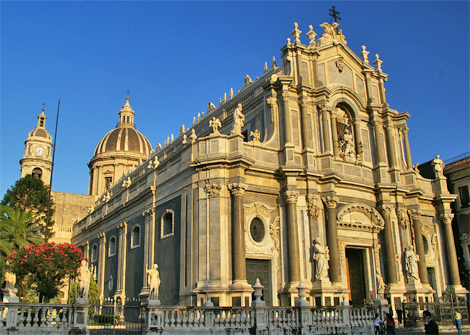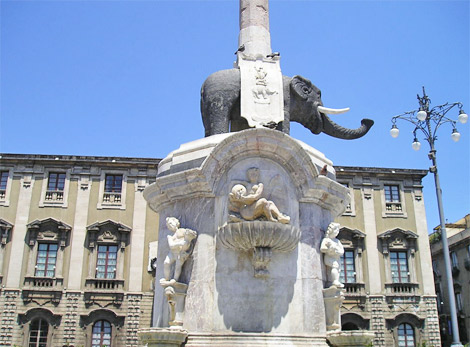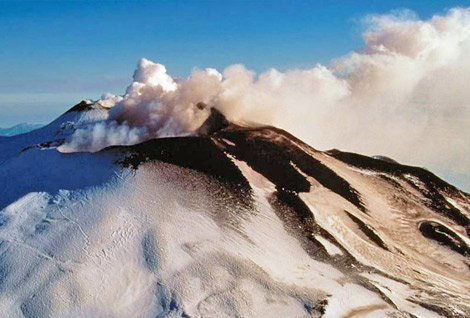Catania
Catania is a city located in the Western part of Sicily, Italy. It is the most industrial settlement of the island and its 300,000 inhabitants make it the most populated city in Sicily after Palermo. Its origins date back to the 8th century BC when it was founded by the Greeks.
Its airport, Fontanarossa, lies few kilometres away from the city. It connects the Western part of Sicily with the rest of Italy and Europe. Flights to Rome last only 45 minutes.

Some of main touristic attractions of Catania are: the Cathedral; the Castello Ursino; the Palazzo degli Elefanti which is nowadays houses the Town Hall of the city; Palazzo Marletta; Piazza Pardo and many others.
The Cathedral of Catania is dedicated to the patron, Sant'Agata. The Church was built in the 11th century on the ruins of previous thermal baths. Its history is quite complicated as it was subject to two earthquakes happened in 1169 and 1693 and a violent fire in 1194. The only Norman remaining elements are its higher transept, three apses and a donjon. What visitors can see currently dates back to the 18th century. Inside, one can see a wooden choir created in the 16th century, a lancet window depicting Santa Agata and the lunettes created by Gian Domenico Mazzolo.

The symbol of Catania is located in the main square "Piazza del Duomo". It is a fountain composed of an obelisk surmounted by an elephant. That was made of porous lava rocks. Probably the animal dates back to the Roman period while the fountain was created by the architect Giovanni Battista Vaccarini.
The territory of Catania includes a part of the Val di Noto, a valley which has been included to Unesco World Heritage List for its remarkable examples of Baroque art.
Visitors are enchanted thanks to the historical and cultural background and, most of all, the delightful views of Catania. No visitor should miss a visit to Etna volcano, also called Mongibello. It is 3,300 meters tall and is the highest active Volcano in Europe. Etna offers visitors memorable panoramas either when it is active and ejects lava or when it is full of snow. A walk among the lava rocks is highly recommended.

Palazzo Ursino is a palace which was ordered by Frederick II in order to be used as fortification. However, it had multiple uses during the centuries and it was even transformed to a prison. There are four towers at the angles of Palazzo Ursino: Torre della Bandiera and Torre del Mortorio in northward, Torre della Scala and Torre del Magazzino southward.Torre di Santa Croce and Torre di San Giorgio were built later in 1554.
The city of Catania is rich in hotels which are mostly characterized by high standards, excellent quality and, if visitors have the chance to book a hotel near the sea, they may enjoy an amazing view to the blue water of the Ionian Sea. Hotels are very comfortable and always ready to meet any need.
